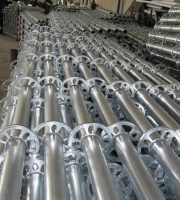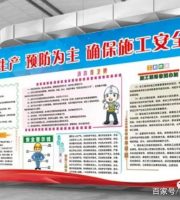To prevent production safety accidents that are prone and frequent during the construction process of housing construction and municipal engineering, and to ensure construction safety..
As construction workers, one should learn relevant safety knowledge and remain vigilant in future work to ensure safety production..
Special Topic on Collapse Prevention and Control – Scaffolding Engineering.
Floor standing steel pipe scaffolding, attached lifting scaffolding, cantilever scaffolding, bridge scaffolding, etc. should be designed according to actual working conditions, and should have sufficient bearing capacity, stiffness, and overall stability..
Scaffolding should be equipped with wall connectors that can withstand pressure and tension according to design calculations and construction requirements. The wall connectors should be firmly connected to the building structure and frame..
The spacing between connecting wall components should comply with relevant standards and special construction plans. During the use of scaffolding, it is strictly prohibited to dismantle wall components at will..
The installation of scaffolding wall components should comply with the following regulations:.
(1) The installation of wall components should be set up at the designated position in a timely manner as the frame rises, without lagging behind the installation;.
(2) When the operation level of the homework scaffold is 2 steps higher than the adjacent connecting wall components, temporary tensioning measures should be taken before the installation of the upper connecting wall components is completed..
The dismantling of scaffolding should comply with the following regulations:.
(1) The dismantling of the scaffold should be carried out layer by layer from top to bottom, and the upper and lower layers should not be dismantled simultaneously;.
(2) The connecting wall components should be removed layer by layer along with the scaffold, and the entire or several layers of the connecting wall components should not be removed before the scaffold is removed;.
(3) During the dismantling process, when the height of the free end of the frame is greater than 2 steps, temporary tensioning components should be added..
Scaffolds shall be provided with diagonal braces or diagonal braces and cross tie rods according to the structural requirements of relevant standards, and shall be firmly connected with the upright pole to form a whole..
The scaffolding operation layer should set up load limit signs in prominent positions, indicating the load limit value. During use, overloading of personnel, machinery, and stacking materials on the working layer is strictly prohibited..
When using attached lifting scaffolding for construction, the following regulations should be met:.
(1) The height, support span, width, horizontal cantilever length, and the product of the total height and support span of the attached lifting scaffold should comply with the current industry standard JGJ 202 Safety Technical Specification for Construction Tool Scaffolding..
(2) A wall support should be installed at each floor covered by the vertical main frame, and its construction should comply with relevant standards and meet the requirements of bearing capacity..
When using the working conditions, the vertical main frame should be fixed on the wall support;.
During lifting and lowering conditions, structural devices with anti tilting and guiding functions should be installed on the wall support..
(3) Attached lifting scaffolding should be equipped with safe and reliable structural devices with anti overturning, anti falling, and synchronous lifting control functions..
A dedicated person should be assigned to monitor the scaffolding operation area during lifting, and each lifting should be inspected and approved before operation..
(4) The concrete strength at the connection between the attached lifting scaffold and the building should be determined by design calculations and should not be less than 10MPa..
(5) Attached lifting scaffolding should be used according to the performance indicators specified in the product design, and the scope of use should not be expanded arbitrarily. Materials should not be overloaded and stacked..
It is strictly prohibited to fix template support frames, cable wind ropes, concrete conveying pump pipes, unloading platforms, and attachments of large equipment.

